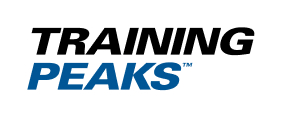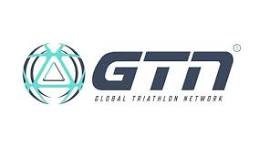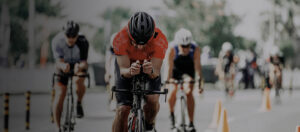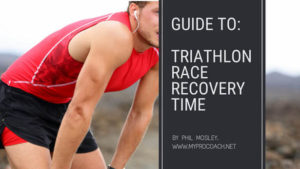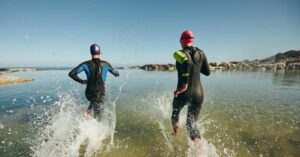Thinking of racing a triathlon, but not sure what to wear?
Let’s face it, there’s a lot to think about when you’re preparing for a triathlon. This is why it’s important to choose the right clothing and gear.
Getting this right can save you time in transitions, as well as making you faster and more comfortable throughout.
In short, you’ll perform better and enjoy the day more.
In this blog, we give you the lowdown on the essential kit you’ll need for a memorable swim, bike and run. Let’s start off with the swim section…
Open Water Goggles
Pool goggles are clearly fine for pool-based triathlons but, if your race begins in open water, we’d recommend specific outdoor goggles. They come armed with subtle – and not so subtle – differences.
First up, the lenses are often that bit larger to offer better peripheral vision – needed when facing the dishwasher that is the triathlon swim. They’ll also come in different lens tints to suit the conditions.
For instance, if you’re facing the heat of Ironman Arizona, you’ll want a pair that copes with glare. If a UK race is your goal, a pair that’s proficient in a variety of conditions, from bright sun to overcast skies, will be ideal. Photo-chromatic lenses are good here as their tint changes dependent on the light.
For example, check out these open water goggles from HUUB.
Triathlon Wetsuit
The primary reason to slip into a triathlon wetsuit is temperature control and safety. That’s why British Triathlon rules state that they’re mandatory below the following temperatures and for the following distances: up to 1,500m, 14°C; 1,501m-3,000m, 15°C; 3,001m-4,000m, 16°C.
They’re also forbidden at temperatures (by distance) above 22°C, 23°C and 24°C, respectively (which is admittedly the stuff of fiction in UK waters!).
In America, the USAT state that you may wear a triathlon wetsuit if the water temperature’s 25.5°C or below. Between 26°C and 28.9°C you can wear one, but won’t be eligible for an award. And they’re banned above 29.5°C. Ironman rules are similar.
That’s the housekeeping ticked off, but what should you look for?
The most important is fit and is why trying before you buy, especially if it’s your first triathlon wetsuit, is essential. Either go to your local triathlon retailer or, if purchasing in open-water season, your local swim lake might hold mornings where you can try out a range of wetsuits.
There are a few golden rules when it comes to fit: it should be snug but not tight; you should have a full range of motion through your shoulders; there must be no folds or excess material, and your neckline should be comfortable and not suffocating.
Neoprene thickness is also important and ranges from 1mm-5mm with thicker sections guided by ability. For instance, a newcomer seeking a better body position might go for 5mm neoprene in the legs to boost buoyancy, while a faster triathlete might seek thinner neoprene in the arms and shoulders for greater mobility.
Ultimately, a well-fitted triathlon wetsuit will make you quicker with research out of France showing that a wetsuit can save 70-90secs over 1,500m, compared to wearing just a swimsuit.
Tri-Suit
Nothing screams triathlete louder than a tri-suit. At first, you might feel you’re too exposed. But fear not. You’re amongst like-minded folk who won’t bat an eyelid. And it’s worth overcoming any concerns as the benefits are many.
A tri-suit can be worn throughout the entire swim, cycle and run – saving you hassle and lost time from getting changed after each discipline.
Other benefits of a tri-suit include providing hydrodynamics and flexibility on the swim; aerodynamics, storage options and comfort on the bike; and core support, cooling and restriction-free running on the final leg.
There are many types of tri-suit on the market but, in general, they’ll comprise Lycra for freedom of movement during all three disciplines; they’ll feature a chamois pad for increased bike bum-comfort, and come with a zipper for ease of entry.
There are numerous tri-suit brands, such as Pearl Izumi, who always make good quality gear.
Bike
Whether it’s a 20km sprint bike leg or 180km Ironman effort, the middle discipline often consumes half of your overall time, so it’s vital you choose wisely. That doesn’t mean, however, that you need to buy a super-aero, carbon-packed triathlon bike.
In fact, if you’re a newcomer, we’d recommend a road bike. These are more versatile, easier to handle and far better for riding in a group, which you’ll do in training.
We’d also say aluminium is fine when starting out. You can always upgrade to carbon when you’ve caught the bug. Then again, any roadworthy bike, be it a mountain bike or hybrid, is fine for your first triathlon.
If you’re looking to boost aerodynamics and save free time, you can always clamp a set of clip-on aero-bars to your bike. These start at around £30 ($40) and are an affordable way to ride faster. But practise in training.
Once you’re more experienced, it’s natural that you’ll start sniffing around pure triathlon bikes. These drag-reducing steeds are designed for speed. To that end, they feature aerodynamic tubing, deep-rim wheels and a geometry that steers you into your optimum slipstream position.
Just be aware that your body might take training to maximise the more aggressive aero position. But stick with it as the gains can be significant.
Bike Helmet
Bike helmets are mandatory at races and arguably should be mandatory in training, too. Either way, all helmets from reputable manufacturers and retailers will satisfy the respective safety criteria, while vents offer a cooling effect from your vigorous rides.
Like all equipment, comfort’s vital, which is achieved via shape of helmet and internal padding. More experienced triathletes might choose a teardrop-shaped helmet for racing. These reduce drag, though are often less comfortable and can heat up.
A good compromise is an aero road helmet that provides both comfort and slipstreaming. Such as the Giro Vanquish.





